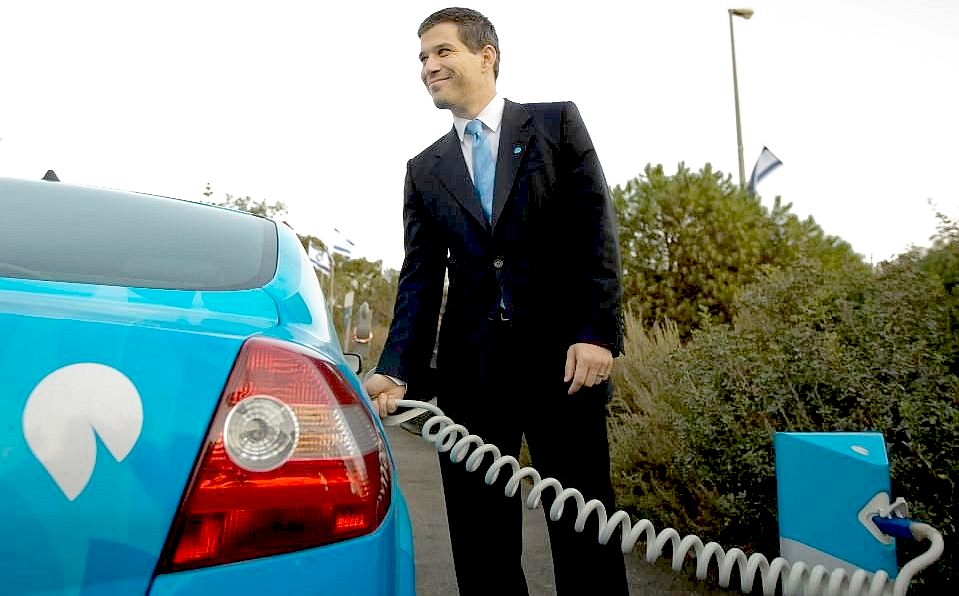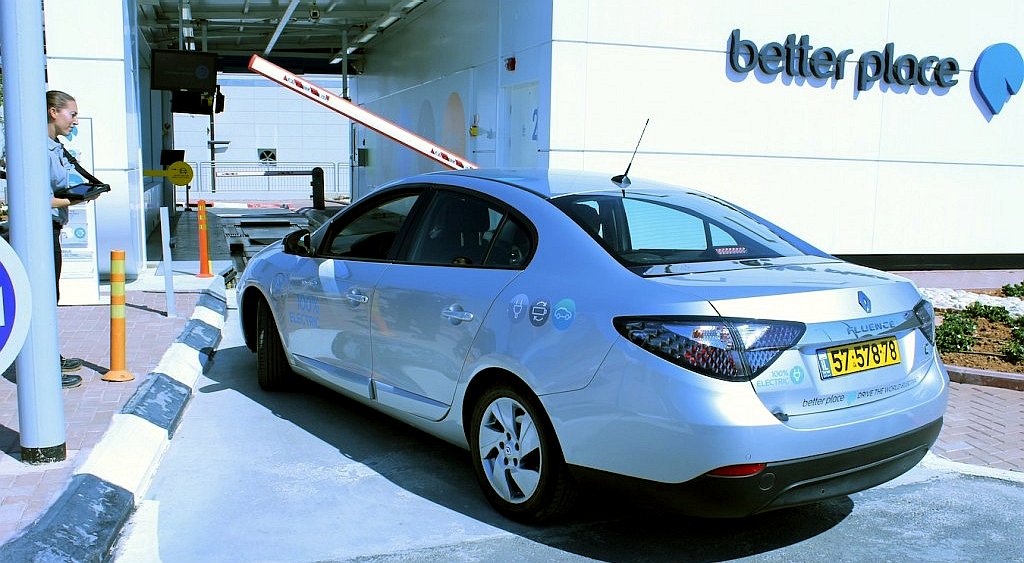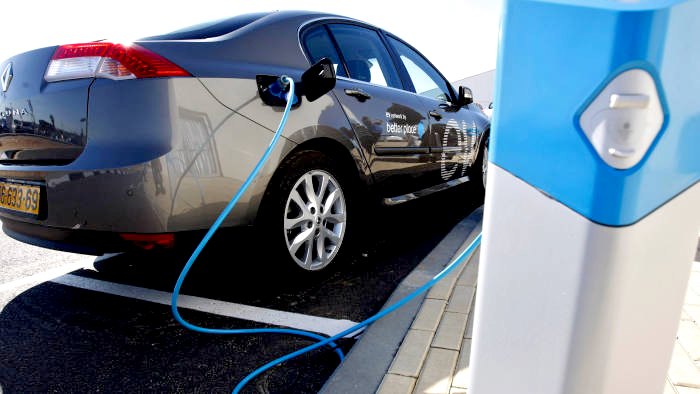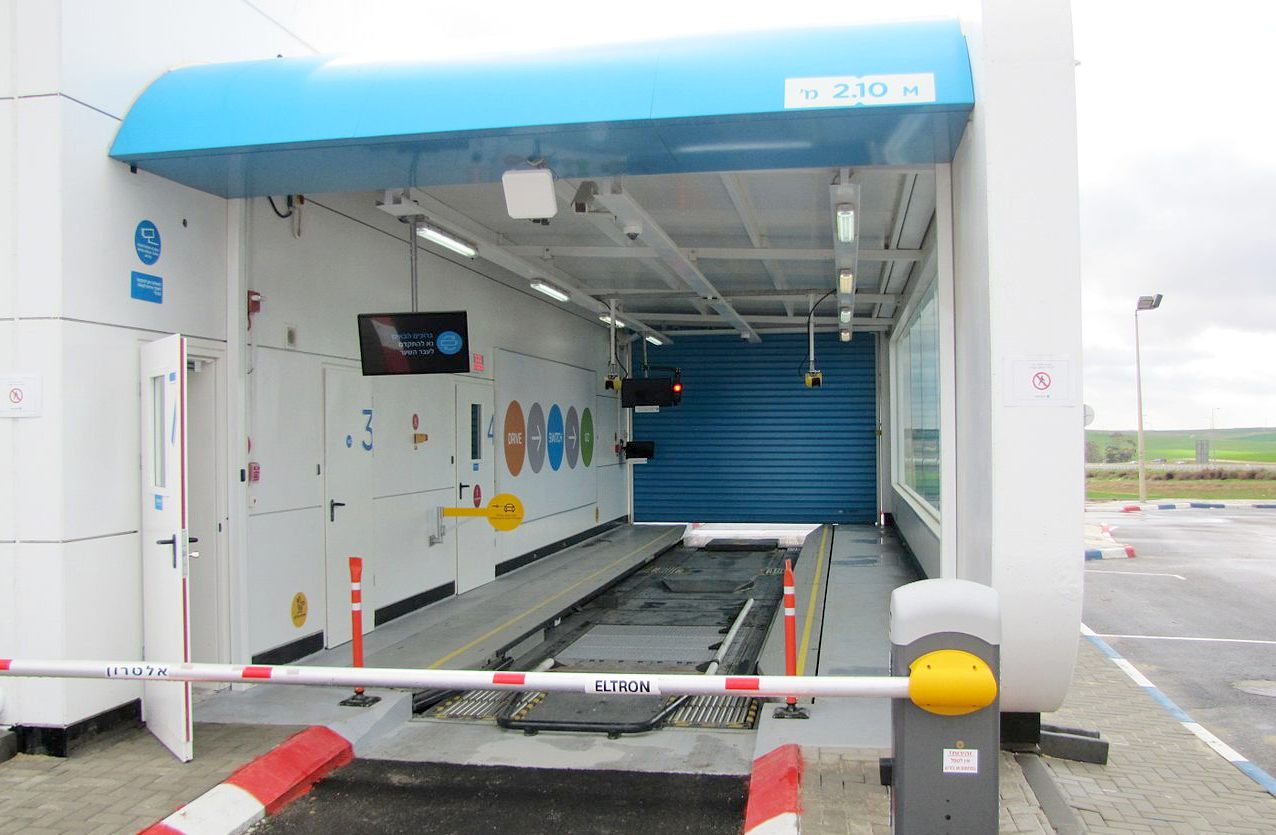|
BETTER PLACE
Please use our A-Z INDEX to navigate this site or see HOME
|
|||||
FORBES
AUGUST 2017 - Shai Agassi was a successful software entrepreneur who wanted to better the planet and came to the conclusion that electric vehicles were the answer to a lot of problems and that battery swapping was the answer to the long charge times. His intention was to build robot-equipped stations, rather like a car wash, where a driver could pull in and have a depleted battery swapped out for a charged one in less time than it took to fill the gas tank on a conventional vehicle. This would overcome two main obstacles to greater penetration of the market by electric vehicles: range anxiety and long charging times. Oh, and the company would own the batteries, leasing them to customers, which would bring vehicle costs down sharply.
What's amazing is not that the company flamed out but that it had islands of success, especially in the Tokyo taxi business. Tokyo is a city with lots of taxis and a need to hold down auto emissions, and Japanese gasoline is expensive; in addition, the charging stations could be relatively few and centrally located at the taxi yards. From the book, it appears as if focusing on that aspect of the business would have made Better Place a success, just not the global dominant auto company that Agassi wanted. He could have been the Checker Cab company (there really was a Checker manufacturer; my parents owned several), just not General Motors.
Some of this might sound like Elon Musk and Tesla, and there are similarities but also differences. Tesla has developed a line of automobiles and a customer base and is well capitalized. However, it's not clear they have the ability to gear up from less than 100,000 sales a year to 600,000 in the space of two to three years. Servicing your customers' vehicles is mundane but expensive and crucial. Software can be fixed remotely over a fiber optic line, but real life mechanics have to be available and on call throughout the nation for a mass-market car company.
And Musk's distractions of the Hyperloop, tunneling, SpaceX and so forth would be better left until Tesla has reached not just high stock market valuation but large-scale operations, when the company is up and running like a well-oiled machine rather than when it is poised to attempt a breakout. The most chilling phrase in Blum's book was "Better Place had even grander plans." I look forward to the rock opera. By Michael Lynch
Along the way, there will always be casualties. Where Shai Agassi's vision for a better world may have been a step too far in a world of political denial as to global warming and carcinogenic smogs, the system at least proved that the automation of battery cartridge swapping was feasible.
History shows us that in the world of invention, it takes many individuals all thinking as a collective human brain to finally perfect technology. The light bulb and Thomas Edison is an example of the kind of determination is takes to drive an idea until it becomes a product.
The Better Place effort was thus a valuable part of the learning curve, showing us how not to implement an energy supply network for electric vehicles - so notching up another stage in the development of sustainable transport.
Where Better Place and Tesla battery swapping came to a halt in 2013, BattSwap, NIO and PowerSwap are alive and well in 2020, even extending to battery swapping for buses.
MAY 25 2013 - Better Place, the electric-car service that pioneered battery swapping for passenger cars, filed for bankruptcy this day in Israel.
A statement on the Better Place website said it had applied to a court for an orderly dissolution of the company to protect "the rights of its employees, customers and creditors."
Over its five years of existence, Better Place raised roughly $800 million in venture capital and assistance from national governments in multiple countries.
The service finally launched in Israel early 2012, and in that time it attracted roughly 2,000 users.
The Better Place model required the customer to buy a vehicle - the only eligible vehicle was the 2012 Renault Fluence ZE, a mid-size sedan made in Turkey by the French Renault car company - but lease the battery pack from the company.
Customers paid a set fee for up to a certain number of miles (kilometers) covered a year, recharging the cars on charge stations installed at their homes and businesses by Better Place as well as on a network of public charging stations.
For longer journeys, customers would drive to the limits of their battery and then be directed to the nearest switching station, where a freshly charged battery pack would be swapped into the car by automated machinery in less than 5 minutes.
Green Car author 'Brian of London' wrote about his experiences after one year as a Better Place customer. Brian has written in depth about his first reactions and his sadness at the company's demise.
In its statement, the Better Place board of directors said it stood behind the original vision of founder Shai Agassi for the network and electric-car service.
"Unfortunately, after a year’s commercial operation, it was clear to us that despite many satisfied customers, the wider public take up would not be sufficient," the statement said, "and that the support from the car producers was not forthcoming."
Details on how the closure of
the company will be handled, how customers will be treated, and the fate of the Better Place cars are likely to emerge after the court hearing.
THE GUARDIAN MARCH 2013 - WHAT WENT WRONG FOR EV STARTUP
If you want to sell electric cars, Israel looks like a great place to start. It’s a small country, with most people clustered around Tel Aviv and Jerusalem. Gasoline costs more than $7.50 a gallon, and oil revenues help support Israel’s Arab foes. So it’s easy to understand why Shai Agassi, an entrepreneur who was born in Israel and made a fortune in Silicon Valley, chose to launch his Better Place electric-car company in Israel, while preparing plans to expand in Europe, Australia, Japan, China, and the U.S.
Agassi was forced out of Better Place in October, his successor as CEO quit in January, and the company has put its global rollout on hold. Better Place needs to raise more money this year, and that won’t be easy, insiders say.
To find out, I spoke to company officials, industry experts, and electric-car executives at rival automakers. And to get a sense of the Better Place driving experience, I took a test drive in the company’s all-electric Renault Fluence EV during a recent trip to Israel, traveling 120 miles round-trip from Tel Aviv to a kibbutz in the Negev Desert.
At Better Place’s battery-switching stations, a depleted battery is replaced with a fully charged one in about five minutes.What got many people (including this writer) excited about Better Place was Agassi’s unorthodox solution to the two big problems with electric cars: You can’t drive them very far without recharging, and they are expensive to build because the battery adds $10,000 or more in costs. David Jones, Better Place’s vice president of business development, put it bluntly when we met: “Gas cars are convenient and affordable. Electric cars — prior to Better Place — are neither of those things. They’re not convenient. They’re not affordable.”
The Better Place solution is to literally separate the battery from the car. To make refueling convenient, Better Place invented automated battery-switching stations; they deploy robots that slide under the car, remove a depleted battery, and replace it with a fully charged one in about five minutes. These battery-swapping stations work faster than chargers; the company has built 37 of them across Israel. By retaining ownership of the battery, Better Place is able to reduce the sticker price of the car, and upgrade the battery as the technology improves.
Like wireless phone companies that discount their hardware and make the money back by selling minutes, Better Place reduces the price of the car and charges its owners a monthly fee for the battery and electricity, based on how many miles they travel. The economics make sense, at least in theory, because electric motors are more efficient than internal combustion engines; buying electricity for an EV is the equivalent of buying gas for about $1 a gallon, says the Electric Drive Transportation Association, an industry group.
In fact, leasing a Better Place car in Israel costs about 20 percent less than a Toyota Prius or Honda Insight hybrid, the company says. “The economics of the electric car are fundamentally better, long-term,” says Mike Granoff, a senior executive at Better Place. In his heyday, Agassi liked to tell people that Better Place would eventually be able to give cars away, and still turn a profit
Local authorities, whose permission was needed to build battery-switching stations, put up unexpected roadblocks, slowing progress, company officials said. And when employers provide the cars to their workers, which is a common practice in Israel, the workers pay a usage tax that reflects the full value of the car, including the battery, undermining Better Place’s effort to drive down costs.
Another shortcoming: Better Place assumed that other automakers would build vehicles that are compatible with its battery-swapping technology, but so far only Renault has done so. The only Better Place car available is the Fluence, a family sedan that’s too big for some drivers and too small for others. Marketing has been another challenge: The company is asking its customers not only to embrace a new technology, but an unfamiliar business model that is hard to explain. Then, just as positive word-of-mouth about the company began to spread last year, Agassi’s departure cast a pall over the enterprise.
“The model requires a leap of faith on the part of the customer, and many were unwilling to take that leap because of the slowness of Better Place’s development,” said John Gartner, an electric car expert with Pike Research. He said battery swapping might make sense for taxis or fleets, but not on a broad scale.
My test drive with Better Place was a mixed bag. On the round trip from Tel Aviv to the Negev, I had to switch batteries twice, going slightly out of my way both times. That’s far from ideal. On the plus side, the battery-switching station, which resembled an automated car wash, worked perfectly: I was in and out in about five minutes, without having to leave my car. And I loved the instant torque and the quiet of the Fluence EV.
Better Place customers seem to be satisfied, too. “We are all so overwhelmingly happy with the service and the car,” an owner known as Brian of London wrote in a blog post after a recent meeting of owners organized by the company; not surprisingly, the feedback was positive.
According to Gartner, the issues at Better Place won’t affect electric cars elsewhere. In the U.S., sales of the Chevy Volt,
Nissan
Leaf, and Tesla Model S are all growing, albeit off a very small base. “While the payback period for some EVs today is too long, we are still in the early days of the industry,” he says.
“I continue to believe that the Better Place vision is both accurate and commercially sound, and trust that whatever shortfalls we suffer are correctly seen as errors of execution not of strategy,” Thornley wrote to employees when he left. Mike Granoff told me that “a million things didn’t go right,” but that Better Place’s approach still makes sense. The company sold more than 100 cars a month in January and February, accounting for about 0.5 percent of all sales in Israel. In December, only 23 were sold.
Others, though, say the Better Place story underscores the fundamental challenge facing the electric car. Without battery-switching, pure electric cars have a limited range and they take a long time to recharge.
Then again, whatever their flaws, there’s no doubt that electric cars generate what economists call “positive externalities.” They’re good for the environment and for a nation’s security because they reduce dependence on oil imports. That’s why the
Obama administration, which set a goal of getting 1 million electric vehicles on U.S. roads by 2015, has thrown its support to electric cars, providing about $2.5 billion in loans and grants to electric-car manufacturers and battery makers, as well as $7,500 in tax credits to electric car buyers.
GREEN CAR REPORTS MAY 2012 - Electric-car infrastructure firm Better Place has spent the past few years creating some serious waves in the electric car world with grandiose claims that it can make electric cars as convenient to use as gasoline ones.
Alongside its fully integrated smart-grid network of charging stations, battery packs and cars, Better Place is best known for its concept of battery swap stations, where cars fitted with appropriate battery packs can exchange a discharged pack for a fully-charged one in less time than it takes to fill up an average car with gasoline.
To find out, we were invited to Israel, where Better Place is in the finishing stages of testing 40 battery swap stations which it hopes will turn Israelis away from gasoline and onto electric cars forever.
Our destination? A battery swap station, designed to highlight the convenience and user-friendly experience of Better Place battery swaps first-hand.
To simulate a long drive, we headed west from our hotel in Jerusalem, over the mountains that lie to the south-west of the city, finally heading north to an industrial park just outside the Modi’in, a Haredi Israeli city just outside the West Bank.
There, Better Place allowed us to try out several battery swap cycles in our car, and gave us a tour of the battery swap station.
Next week, we’ll give you more insight into the technology behind the battery swap, but for now, we’re going to focus on the experience of battery swapping.
Arriving with around 50 percent remaining charge, we pulled into the swap station to be greeted by a member of Better Place staff.
Currently not open to the public, the staff member supervising the switch is there to ensure that Better Place’s final phase of stress testing goes according to plan. We were told each switch station has to endure 1,000 trouble-free switches before Better Place will allow it to open to the public.
Guided into the switch station, which looks a little like an automated car wash, guide rails ensure each wheel is correctly lined, while a red/green stop light instructs drivers when they have reached the correct stopping point.
Once correctly situated, the car’s own telematics system instructs the driver to place the car into Neutral, turn off the vehicle and remove all hands and feet from the controls.
Throughout the process, a clear monitor in the battery swap station and the in-car telematics system clearly illustrate what is happening, from the removal of the depleted battery pack to the insertion of a fully charged one.
When complete, the car is slowly lowered, and the driver is instructed to move off. Throughout the process, the driver and passengers stay inside the car.
From start to finish, the process took a little over six minutes, and gave us a fully-charged battery capable of driving another 110 miles without stopping.
We loved the ease of the battery swap, and the clear way in which the system kept us informed of what was happening. Certainly faster than a rapid DC charging station, we’re interested to see how the technology will perform when opened to the public in the next month or so.
HYDROGEN FUEL CELL CARTRIDGE - It looks like a battery cartridge. It performs like a battery cartridge. It stores energy like a battery cartridge, but it is a hydrogen fuel store and fuel cell cartridge combination. Where lithium and cobalt raw materials may limit the production numbers of EVs as green motoring becomes the norm, hydrogen in a safe format might offer unlimited possibilities. The concept is compatible with SMARTNET FASTCHARGE service stations. NOTE: This is just a concept, not a product yet. More development is needed before mass production could be entertained.
EUROPEAN AUTO MANUFACTURERS:
- Audi - BMW - Citroen - Fiat - Ford - Lotus - Mercedes - Peugeot - Renault - Seat - Smart
BETTER PLACE - Better, it might have been, but future proofed enough for a developing market, it was not. This early battery cartridge exchange station from Better Place, was a stepping stone in the evolution of the electric vehicle. We should not undervalue the efforts of those brave engineers who took a chance and failed. Because with each failure we know to look elsewhere for a solution. The epitome of perseverance in the face of adversity is Thomas Edison, when developing the incandescent light bulb.
CONTACTS
Solar House BN27 1RF, United Kingdom PIC No: 895922168
A - Z of CARS and MOTORCYCLES
LINKS & REFERENCE
https://www.theguardian.com/environment/2013/mar/05/better-place-wrong-electric-car-startup https://medium.com/@pdiwan/is-battery-swapping-a-viable-option-for-public-transportation-evs-adb4ced74ff2 https://www.greencarreports.com/news/1076134_better-place-electric-car-battery-swapping-live-report https://autotraveler.ru/en/spravka/fuel-price-in-europe.html#.XkYr3252tPY https://www.theaa.com/driving-advice/driving-costs/fuel-prices https://ec.europa.eu/easme/en/section/sme-instrument/eic-accelerator-sme-instrument-funding-opportunities
Please use our A-Z INDEX to navigate this site
|
|||||
|
This website is provided on a free basis as a public information service. copyright © Climate Change Trust 2021. Solar Studios, BN271RF, United Kingdom.
|





